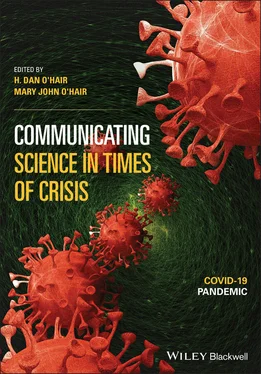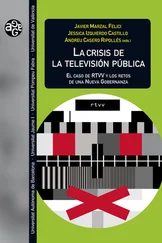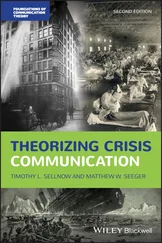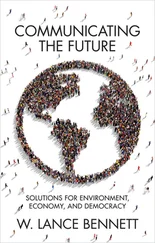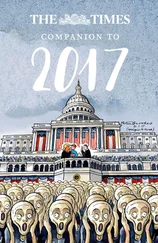12 Bélanger, J. J., Faber, T., & Gelfand, M. J. (2013). Supersize my identity: When thoughts of contracting swine flu boost one’s patriotic identity. Journal of Applied Social Psychology, 43(S1), E153–E155. https://doi.org/10.1111/jasp.12032
13 Blondé, J., & Girandola, F. (2019). When defensive reactions contribute to the acceptance of fear-arousing communications. Current Psychology, 38(1), 75–83. https://doi.org/10.1007/s12144-017-9590-z
14 Bowlby, J. (1973). Attachment and loss (Volume II): Separation, anxiety and anger. The Tavistock Institute of Human Relations.
15 Buchanan, L, Gamio, L, Leatherby, L, Stein, R., & Triebert, C. (2020, October 3). Inside the White House event now under Covid-19 scrutiny. New York Times. https://www.nytimes.com/interactive/2020/10/03/us/rose-garden-event-covid.html
16 Burke, B. L., Martens, A., & Faucher, E. H. (2010). Two decades of terror management theory: A meta-analysis of mortality salience research. Personality and Social Psychology Review, 14(2), 155–195. https://doi.org/10.1177/1088868309352321
17 CCSE. (2021). COVID-19 data repository by the Center for Systems Science and Engineering, Johns Hopkins University. https://www.arcgis.com/apps/opsdashboard/index.html#/bda7594740fd40299423467b48e9ecf6
18 CDC. (2021). Different COVID-19 vaccines. Centers for Disease Control and Prevention. https://www.cdc.gov/coronavirus/2019-ncov/vaccines/different-vaccines.html
19 Claudy, M. C., Michelsen, C., & O’Driscoll, A. (2011). The diffusion of microgeneration technologies—Assessing the influence of perceived product characteristics on home owners’ willingness to pay. Energy Policy, 39(3), 1459–1469. https://doi.org/10.1016/j.enpol.2010.12.018
20 Cox, C. R., & Arndt, J. (2012). How sweet it is to be loved by you: The role of perceived regard in the terror management of close relationships. Journal of Personality and Social Psychology, 102(3), 616–632. https://doi.org/10.1037/a0025947
21 Crocker, J., & Wolfe, C. (2001). Contingencies of self-worth. Psychological Review, 108(3), 593–623. https://www.jstor.org/stable/20183024
22 Czeisler, M. E., Lane, R. I., Petrosky, E., Wiley, J. F., Christensen, A., Njai, R., Weaver, M. D., Robbins, R., Facer-Childs, E. R., Barger, L. K., Czeisler, C. A., Howard, M. E., & Rajaratnam, S. M. (2020, August 14). Mental health, substance use, and suicidal ideation during the COVID-19 pandemic. Morbidity and Mortality Weekly Report, 69(32), 1049–1057. https://www.cdc.gov/mmwr/volumes/69/wr/mm6932a1.htm
23 Das, E., Bushman, B. J., Bezemer, M. D., Kerkhof, P., & Vermeulen, I. E. (2009). How terrorism news reports increase prejudice against outgroups: A terror management account. Journal of Experimental Social Psychology, 45(3), 453–459. https://doi.org/10.1016/j.jesp.2008.12.001
24 DeMarco, C. (2020, July 17). COVID-19 herd immunity: 7 questions, answered. MD Anderson Cancer Center. https://www.mdanderson.org/cancerwise/what-is-covid-19-coronavirus-herd-immunity-when-will-we-achieve-herd-immunity.h00-159383523.html
25 Dubé, E., Laberge, C., Guay, M., Bramadat, P., Roy, R., & Bettinger, J. (2013). Vaccine hesitancy: An overview. Human Vaccines & Immunotherapeutics, 9(8), 1763–1773. https://doi.org/10.4161/hv.24657
26 Egan, L. (2020). Inside Trump’s Tulsa rally, no distancing despite empty seats, few masks and plenty of doubt about coronavirus. NBC News. https://www.nbcnews.com/politics/2020-election/inside-trump-s-tulsa-rally-no-distancing-few-masks-plenty-n1231654
27 Erikson, E. H. (1959). Identity and the life cycle. Psychological Issues, 1(1), 1–171.
28 Escobar, N. (2020, March 4). When xenophobia spreads like a virus: Code switch. NPR.Org. https://www.npr.org/2020/03/02/811363404/when-xenophobia-spreads-like-a-virus
29 Evanega, E, Lyna, M., Adams, J., & Smolenyak, K. (2020). Coronavirus misinformation: Quantifying sources and themes in the COVID-19 “infodemic”. Alliance for Science. https://allianceforscience.cornell.edu/wp-content/uploads/2020/09/Evanega-et-al-Coronavirus-misinformationFINAL.pdf
30 Ferraro, R., Shiv, B., & Bettman, J. R. (2005). Let us eat and drink, for tomorrow we shall die: Effects of mortality salience and self-esteem on self-regulation in consumer choice. Journal of Consumer Research, 32(1), 65–75. https://doi.org/10.1086/429601
31 Fisher, E., Kaplan, R. M., & Glass, L. L. (2020, October 4). President Trump’s risky behavior goes viral. The Hill. https://thehill.com/opinion/healthcare/519531-president-trumps-risky-behavior-goes-viral
32 Florian, V., & Mikulincer, M. (1998). Symbolic immortality and the management of the terror of death: The moderating role of attachment style. Journal of Personality and Social Psychology, 74(3), 725–734. https://doi.org/10.1037/0022-3514.74.3.725
33 Florian, V., Mikulincer, M., & Hirschberger, G. (2002). The anxiety-buffering function of close relationships: Evidence that relationship commitment acts as a terror management mechanism. Journal of Personality and Social Psychology, 82(4), 527–542. https://doi.org/10.1037/0022-3514.82.4.527
34 Fonseca, P., & McGeever, J. (2020, March 27). Brazil leader wants to end social distancing even as cases soar past 3,400. Global News. https://globalnews.ca/news/6745313/brazil-coronavirus-social-distancing
35 Friese, M., & Hofmann, W. (2008). What would you have as a last supper? Thoughts about death influence evaluation and consumption of food products. Journal of Experimental Social Psychology, 44(5), 1388–1394. https://doi.org/10.1016/j.jesp.2008.06.003
36 Goldenberg, J. L., & Arndt, J. (2008). The implications of death for health: A terror management health model for behavioral health promotion. Psychological Review, 115(4), 1032–1053. https://doi.org/10.1037/a0013326
37 Goldenberg, J. L., Pyszczynski, T., Greenberg, J., & Solomon, S. (2000). Fleeing the body: A terror management perspective on the problem of human corporeality. Personality and Social Psychology Review, 4(3), 200–218. https://doi.org/10.1207%2FS15327957PSPR0403_1
38 Golec de Zavala, A., Bierwiaczonek, K., Baran, T., Keenan, O., & Hase, A. (2020). The COVID-19 pandemic, authoritarianism, and rejection of sexual dissenters in Poland. Psychology of Sexual Orientation and Gender Diversity. Advance online publication. http://dx.doi.org/10.1037/sgd0000446
39 Goossen, T., Guan, J., & Peng, I. (2004). Yellow peril revisited: Impact of SARS on the Chinese and Southeast Asian Canadian Communities.
40 Grandpre, J., Alvaro, E. M., Burgoon, M., Miller, C. H., & Hall, J. R. (2003). Adolescent reactance and anti-smoking campaigns: A theoretical approach. Health Communication, 15(3), 349–366. https://doi.org/10.1207/S15327027HC1503_6
41 Greenberg, J. (2012). Terror management theory: From genesis to revelations. In P. R. Shaver & M. Mikulincer (Eds.), Meaning, mortality, and choice: The social psychology of existential concerns (pp. 17–35). APA Books. https://doi.org/10.1037/13748-001
42 Greenberg, J., & Arndt, J. (2011). Terror management theory. In A. M. Paul, A. Van Lange, W. Kruglanski, & E. T. Higgins (Eds.), Handbook of theories of social psychology (pp. 398–415). Sage.
43 Greenberg, J., & Kosloff, S. (2008). Terror management theory: Implications for understanding prejudice, stereotyping, intergroup conflict, and political attitudes. Social and Personality Psychology Compass, 2(5), 1881–1894. https://doi.org/10.1111/j.1751-9004.2008.00144.x
44 Greenberg, J., Pyszczynski, T., & Solomon, S. (1986). The causes and consequences of a need for self-esteem: A terror management theory. In R.F. Baumeister (Ed.), Public self and private self (pp. 189–212). New York.
45 Greenberg, J., Schimel, J., Martens, A., Solomon, S., & Pyszcznyski, T. (2001). Sympathy for the devil: Evidence that reminding Whites of their mortality promotes more favorable reactions to White racists. Motivation and Emotion, 25(2), 113–133. https://doi.org/10.1023/A:1010613909207
Читать дальше
